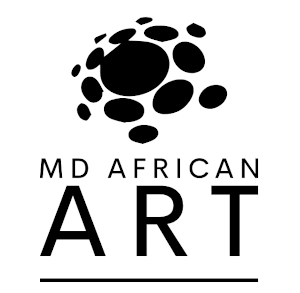This show is a testament to Onobrakpeya's profound impact on the art world through his innovative techniques in printmaking and sculpture, and his dedication to capturing and preserving African cultural heritage.
Born in 1932 in Agbarha-Otor, Delta State, Nigeria, Onobrakpeya has spent over six decades pioneering and shaping modern Nigerian art. As a member of the Zaria Art Society, also known as the "Zaria Rebels," he played a crucial role in decolonizing African art, advocating for the incorporation of indigenous themes and techniques into contemporary practices. This movement sought to redefine African art, moving away from Western influences and emphasizing the continent's rich cultural traditions.
Onobrakpeya's methods involve creating textured, three-dimensional prints that are both visually striking and rich in detail. His works often depict Nigerian folklore, spirituality, and daily life, using vibrant colors and intricate patterns to tell stories deeply rooted in African culture. The exhibition features some of his most celebrated prints, offering viewers a glimpse into his artistic process and the cultural narratives that inspire his work.
One of the central themes of the exhibition is the exploration of Onobrakpeya’s Urhobo heritage. His art is deeply influenced by the folklore, religious practices, and social customs of the Urhobo people. This connection is evident in the pieces displayed at the Smithsonian, which often feature mythological themes and historical events. Through his art, Onobrakpeya not only preserves the traditions of his people but also brings them to a global audience, fostering a greater understanding and appreciation of African culture.
In addition to his prints, "The Mask and the Cross" also includes a selection of Onobrakpeya’s sculptures. These three-dimensional works extend the themes present in his prints, offering a tactile and immersive experience. The sculptures, made from materials such as bronze and wood, reflect traditional African craftsmanship while also pushing the boundaries of contemporary art. They serve as a testament to Onobrakpeya’s versatility as an artist and his ability to convey complex cultural narratives through various mediums.
The title of the exhibition, "The Mask and the Cross," alludes to the intersection of traditional African symbols and Christian iconography in Onobrakpeya’s work. This fusion reflects the cultural and religious syncretism that characterizes much of Nigerian society. By blending these elements, Onobrakpeya creates a dialogue between different cultural and religious traditions, highlighting their coexistence and mutual influence.
Beyond his artistic achievements, Onobrakpeya is also a dedicated educator and mentor. He founded the Harmattan Workshop in Agbarha-Otor, which provides a space for artists to experiment, learn, and collaborate. This initiative underscores his commitment to nurturing the next generation of artists and ensuring the continued vitality of African art.
"The Mask and the Cross" at the Smithsonian National Museum of African Art is a celebration of Bruce Onobrakpeya’s enduring legacy. It offers a comprehensive look at his work, showcasing the breadth and depth of his artistic vision. For visitors, the exhibition provides a unique opportunity to engage with the work of a master artist whose creations continue to inspire and resonate across generations.
This exhibition not only honors Onobrakpeya’s contributions to the art world but also serves as a powerful reminder of the importance of preserving and celebrating cultural heritage. Through "The Mask and the Cross," the Smithsonian highlights the rich cultural tapestry of Africa and the vital role of artists like Bruce Onobrakpeya in weaving it.

